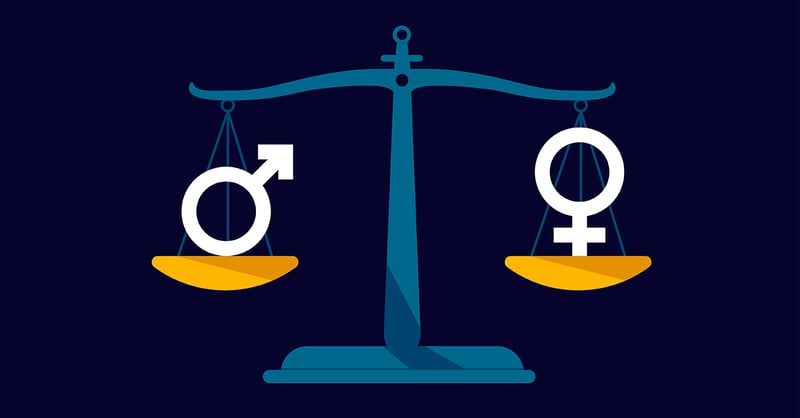The gender pay gap is the average difference between the remuneration of working men and women. This is an equality measurement, as discrimination is a contributing factor to the gender pay gap, which is still globally prevalent.
Gender pay gap & gender disparity statistics
The need for more transparency and institutional change becomes alarmingly clear when you look at the following statistics:
- On average, women are paid 14% less than men in the UK
- No country has reached full gender parity, and at the current rate, this will take 134 years
- The UK is ranked 14th out of 146 countries for gender pay gap efforts
- In general, for every £100 earned by a man, a woman earns £85,70
- Financial Times analysis shows that nearly 80% of UK employers pay men more than women on average
What is the gender pay gap UK?
The gender pay gap reporting duty was outlined in the draft Equality Act 2010 (Gender Pay Gap Information) Regulations 2016 and came into force on April 6th 2017. Its aim is to incentivise boards to take gender diversity seriously.
The Gender Pay Gap Reporting deadline is 30 March for public authority employers and 4 April for private employers, with companies required to report and publish details of their gender pay gap each year.
Under these rules, companies with over 250 employees are required to publish details of their gender pay gap and gender bonus gap annually.
Firms must also calculate and publish the gender bonus gap, the proportion of men and women who get a bonus, and the proportion of men and women working at each quartile of the firm's pay distribution.
How to ensure gender pay gap reporting compliance
With this in mind, we have eight simple steps for you to follow to ensure that your gender pay gap reporting is compliant:
1. Assess your gender pay data collection
Are you gathering information on gross hourly rates, paid leave, overtime expenses and maternity pay etc.? Think about what infrastructure, procedures and resources you'll need to adopt so that the right information is routinely collected and collated.
2. Review and update related policies
Review your existing policies (such as enhanced paternity leave or shared parental leave, bullying and harassment, flexible working, promotion, training and development) and decide whether they should be updated to rectify any gender pay gap.
3. Act early
It is possible that data will reveal flaws or shortcomings in existing policies. By getting the data as soon as possible, you'll be able to address potential issues swiftly.
4. Plan for the future
The Think Future survey by KPMG found that 55% of female undergraduates (compared with 27% of males) are influenced by a sector's attitude to gender diversity when job-seeking. So, make sure you think longer term about how you're going to attract female talent and reduce the gender pay gap in future, so women are better represented at all levels of your company.
5. Set gender pay targets
'What gets measured gets done', right? While you won't be able to transform your workplace overnight, you should start by setting realistic targets in key areas to bring about improvements. Targets can also increase accountability.
6. Get the 'tone from the top' right
Senior management and board 'buy-in' can make a huge difference. Consider how best to ensure equal representation at all levels, including at senior management and on the board.
7. Change company culture
Explore other ways of supporting women - for example, via training, mentoring, offering flexible working hours as standard, creche facilities, and shared parental leave - so you attract and retain top female talent.
8. Tackle unconscious bias
Avoid stereotyping or making assumptions based on gender or maternity, which might limit opportunity. If you are not sure, ask!
Want to learn more about Equality & Compliance?
We’ve created a comprehensive Equality & Diversity roadmap to help you navigate the compliance landscape, supported by e-learning in our Essentials Library.
We also have 100+ free compliance training aids, including assessments, best practice guides, checklists, desk aids, eBooks, games, posters, training presentations and even e-learning modules!
Finally, the SkillcastConnect community provides a unique opportunity to network with other compliance professionals in a vendor-free environment, priority access to our free online learning portal and other exclusive benefits.







